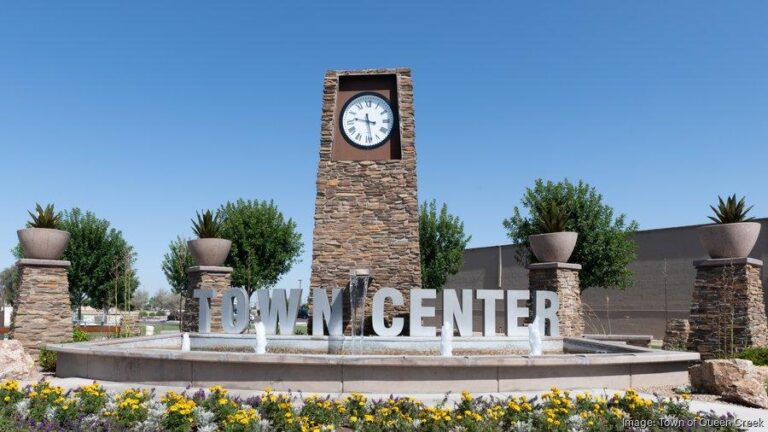East Valley cities are making headlines as some of the fastest-growing urban areas in the nation, with one city ranking fourth among large cities nationwide, according to a recent report by The Business Journals. This surge in population growth highlights the regionŌĆÖs rising appeal for residents and businesses alike, driven by economic opportunities, improved infrastructure, and quality of life. The growth trajectory of these cities is reshaping the demographic and economic landscape of the East Valley, positioning it as a key player in the countryŌĆÖs urban expansion trends.
East Valley Cities Experience Rapid Population Growth Driving Economic Expansion
The East Valley region has become a magnet for new residents, reflecting a surge that is reshaping the area’s economic landscape. Factors driving this population boom include affordable housing, expanding job opportunities, and a high quality of life. Cities such as Gilbert, Mesa, and Chandler have seen unprecedented growth rates, with one city notably ranking fourth among the nation’s largest cities for population increase. This influx has catalyzed significant investments in infrastructure, retail development, and technology sectors.
Economic expansion in these communities is marked by:
- Robust job creation in tech, healthcare, and manufacturing industries
- Retail and hospitality growth, fueling local entrepreneurship
- Infrastructure projects enhancing transportation and public services
| City | 2023 Population Growth Rate | Key Economic Driver |
|---|---|---|
| Gilbert | 5.4% | Technology Expansion |
| Mesa | 4.9% | Healthcare Services |
| Chandler | 5.7% | Manufacturing & Innovation |
Key Factors Fueling East ValleyŌĆÖs Rise as a Hub for Innovation and Business Development
East ValleyŌĆÖs transformation into a thriving center for innovation and business development is no accident. Driven by a combination of strategic city planning and an influx of talent, the region has cultivated an ecosystem where startups and established companies can flourish side by side. Critical to this growth is the availability of affordable commercial space, attracting entrepreneurs eager to capitalize on lower operational costs without sacrificing access to major markets. Furthermore, a robust network of research institutions and universities consistently feeds the local economy with fresh ideas and a skilled workforce, forming the backbone of sustainable economic expansion.
The East Valley’s rise is also propelled by targeted investments in infrastructure and technology. High-speed internet access, modern transportation systems, and a supportive regulatory environment create fertile ground for innovation. Local governments have prioritized fostering collaboration across industries, exemplified by numerous tech incubators and business accelerators that provide crucial resources and mentorship. These factors combine to create an environment where innovation is encouraged, and businessesŌĆöwhether startups or industry leadersŌĆöcan scale quickly and efficiently.
- Affordable office and industrial space for startups and SMEs
- Strong educational institutions supplying talent and research
- Strategic infrastructure investments supporting connectivity
- Pro-business policies and incentives encouraging growth and investment
- Collaborative innovation hubs fueling entrepreneurship
| Key Metric | East Valley | National Avg. |
|---|---|---|
| Year-over-year job growth | 5.2% | 2.9% |
| New business registrations | 3,400 | 1,800 |
| Tech sector growth rate | 8.7% | 4.4% |
Challenges and Opportunities for Infrastructure Amid Accelerated Urban Growth
Rapid population influx in East Valley cities has placed immense pressure on existing infrastructure systems. From transportation networks to public utilities, many facilities are struggling to keep pace with demand. Congestion on roads, aging water pipelines, and overstretched healthcare services serve as clear indicators that urban planners must adopt innovative, scalable solutions. Nevertheless, this explosive growth also presents a critical window to modernize infrastructure and leverage smart city technologies, ensuring sustainable development that benefits current residents and future generations.
Local governments and private sectors face an urgent need to collaborate on multi-dimensional approaches that enhance resilience while accommodating expansion. Key focus areas include:
- Investment in public transit: Expanding efficient, eco-friendly alternatives to reduce traffic burdens
- Smart utility grids: Implementing technology-driven monitoring and adaptive resource management
- Affordable housing initiatives: Balancing new construction with community preservation
- Green spaces integration: Promoting urban biodiversity and improving quality of life
| Challenge | Opportunity |
|---|---|
| Traffic congestion | Investment in light rail and bike lanes |
| Water supply strain | Smart metering and leak detection systems |
| Limited affordable housing | Public-private housing partnerships |
| Environmental degradation | Urban green infrastructure projects |
Strategies for Sustainable Growth and Community Engagement in East Valley Cities
East Valley cities are rapidly redefining urban growth by implementing innovative strategies focused on sustainability and active community participation. Local governments are prioritizing green infrastructure projects, including the expansion of bike lanes, community parks, and water-efficient landscaping that reduce environmental impact while enhancing residentsŌĆÖ quality of life. These efforts are supported by public-private partnerships fostering economic resilience and attracting diverse businesses that contribute to the regionŌĆÖs robust job market. Emphasizing inclusivity and accessibility, many cities have launched programs to engage local populations in decision-making processes, ensuring growth benefits are widely distributed.
Community engagement initiatives have become a cornerstone of East ValleyŌĆÖs approach, leveraging technology and grassroots forums to connect citizens with leaders. Regular town halls, digital platforms, and neighborhood task forces enable residents to voice concerns and contribute to long-term planning. Key focuses include:
- Affordable housing development to address rapid population influx
- Improved public transit options reducing traffic congestion and emissions
- Investment in education and workforce training aligned with emerging industries
| Strategy | Impact | Target Completion |
|---|---|---|
| Green Community Parks | Improved air quality, recreation | 2025 |
| Affordable Housing Initiatives | Reduced housing scarcity | 2026 |
| Public Transit Expansion | Lowered commute times | 2024 |
Wrapping Up
As the East Valley continues to attract new residents and businesses, its status as one of the nationŌĆÖs fastest-growing regions is solidifying. With one city ranking fourth among large cities, the areaŌĆÖs economic dynamism and quality of life remain key drivers of its rapid expansion. As these communities evolve, their growth will undoubtedly shape the broader regional landscape in the years to come.







